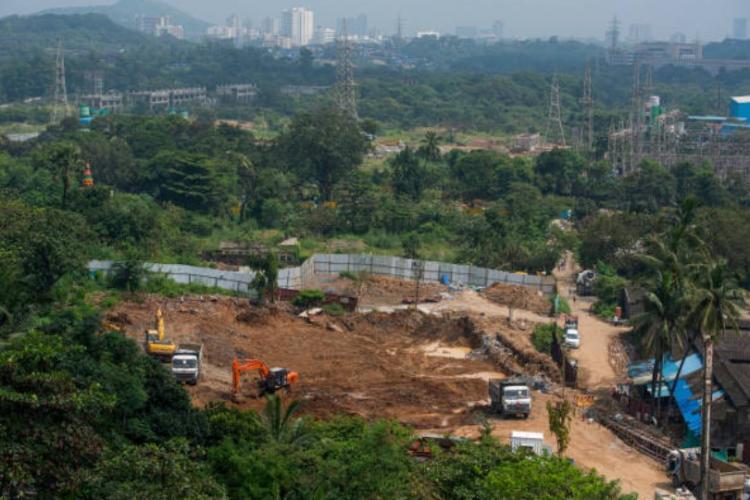SC ruling on environmental clearance: India’s environmental laws are fast acquiring the character of a double helix—intertwined strands of principle and pragmatism that often pull in opposite directions. On paper, the state enforces emission caps, pushes compliance in high-polluting sectors, and swears allegiance to green goals. In practice, it bends over backwards to shield industry from the consequences of environmental damage, even when such indulgence flouts its own legal framework. The Supreme Court, perhaps the last institutional custodian of environmental sanity, has once again reminded the executive that economic growth cannot come at the cost of constitutional guarantees.
While the government has made strides in curbing greenhouse gas emissions in four of its most energy-intensive sectors, it has simultaneously introduced policies that shield industries from liability for environmental harm. This contradiction did not go unnoticed by the apex court, which reaffirmed that environmental jurisprudence in India cannot be sacrificed at the altar of ease of doing business.
READ | India’s carbon credit market must serve farmers, not just corporations
SC on ex-post facto environmental clearance
The Supreme Court’s recent judgment came in response to a batch of petitions challenging the 2017 MoEF&CC notification, which had created a six-month one-time window for industries to regularise their operations post facto. Citing earlier landmark rulings—Common Cause v. Union of India (2017) and Alembic Pharmaceuticals v. Rohit Prajapati (2020)—the bench declared that such clearances are alien to environmental law and violate the principle of prior environmental scrutiny under the 2006 EIA notification.
The court went further, censuring the government for issuing a 2021 office memorandum and a “craftily worded” standard operating procedure that attempted to bypass judicial pronouncements by avoiding the term “ex-post facto” while maintaining the same intent. It prohibited the government from issuing similar orders in future, noting that such efforts to protect polluters go against the constitutional and statutory mandate of Article 21—the right to life and a healthy environment.
In the Alembic judgment, Justices DY Chandrachud and Ajay Rastogi had observed that the concept of ex-post facto clearances was in derogation of environmental principles and fundamentally incompatible with the environmental impact assessment framework.
The Vellore precedent and accountability
In another recent order, the court directed the Tamil Nadu government to recover restoration costs and compensate affected communities in Vellore’s Palar River basin, which had suffered extensive pollution due to untreated effluents from tannery industries. The court’s directions were uncompromising, holding industries accountable for ecological degradation and affirming that corporate impunity cannot be masked by state inaction.
This is not the first time the judiciary has stepped in to fill the vacuum left by weak enforcement. From mining to tanneries, and from chemical manufacturing to urban infrastructure, India’s most polluting industries have routinely flouted environmental norms under the cover of governmental leniency or regulatory failure.
The illusion of sustainable development
Despite the judiciary’s interventions, the broader arc of enforcement remains weak. Judicial decisions often resemble hedge-trimming—snipping errant twigs while leaving the larger structure of environmental violation untouched. The balancing act, frequently dressed up as sustainable development, tends to favour economic expansion over ecological safeguards.
This tilt is particularly stark under the current administration, which projects muscular governance and shows diminishing appetite for judicial activism. In such a political environment, the courts appear increasingly reluctant to challenge executive decisions too strongly.
A call for coherent reform and enforcement
India’s rising pollution levels—evident in cities like Delhi where air quality has plunged to dangerous levels—highlightthe urgent need to strengthen environmental law, not dilute it. Article 21 has been interpreted over the years to include the right to clean air and water, but without robust enforcement, these rights remain aspirational.
A comprehensive reform agenda must include stricter enforcement mechanisms, especially for highly polluting sectors; transparent public consultations in environmental clearance processes; and capacity building for pollution control boards and monitoring agencies
India’s environmental laws must not become tools for post-facto validation of harm in the name of national interest. Economic growth cannot come at the expense of ecological devastation. The Supreme Court’s verdict offers a much-needed course correction—but the burden of translating legal victories into ground realities rests with the state, regulatory institutions, and civil society.
Even if the spark of environmental justice is dim, it still burns—largely because the judiciary has kept it alive. The hope now is that this latest judgment does more than set a precedent. It must become the trigger for a genuine shift in how India enforces environmental accountability.

